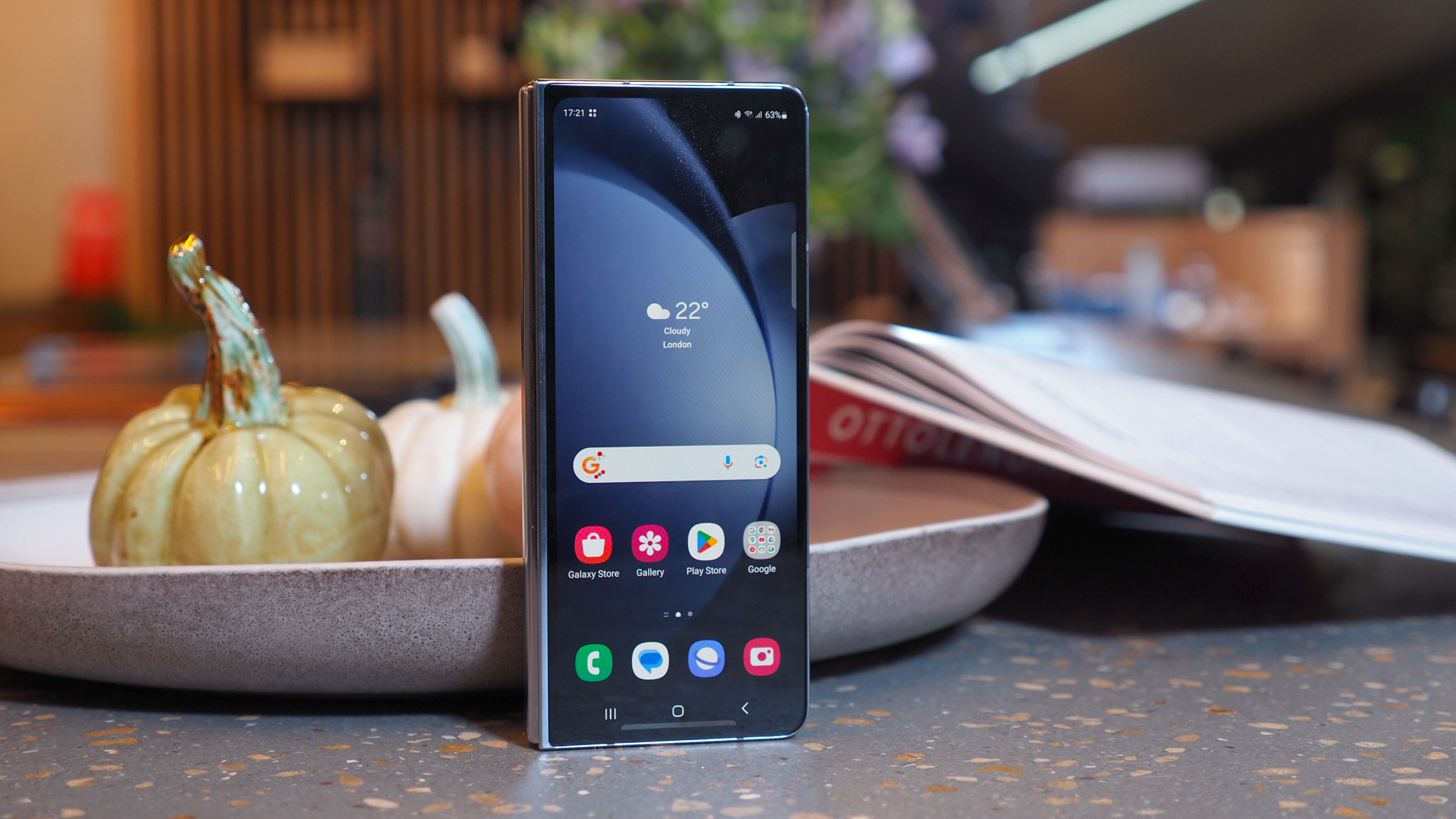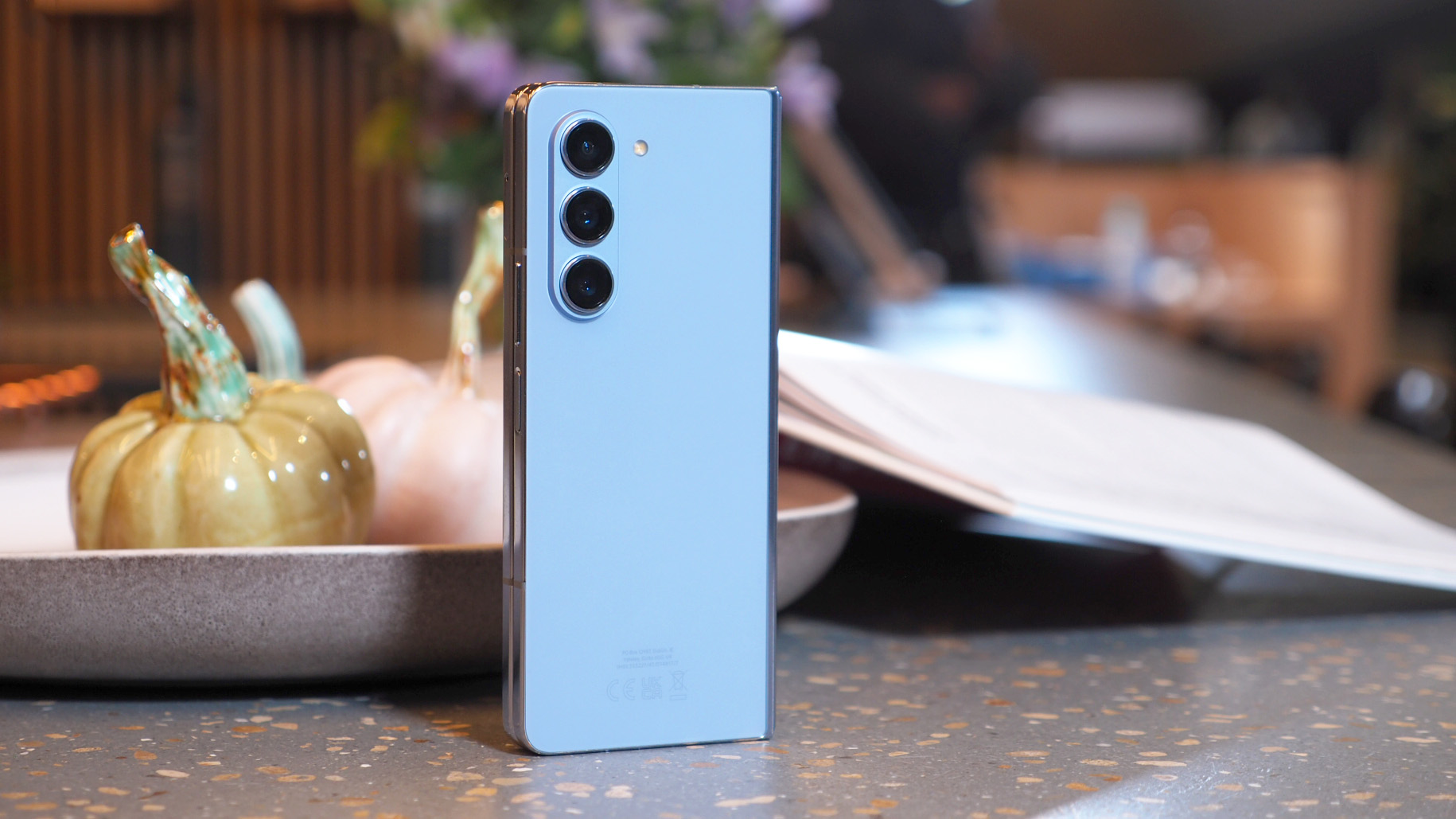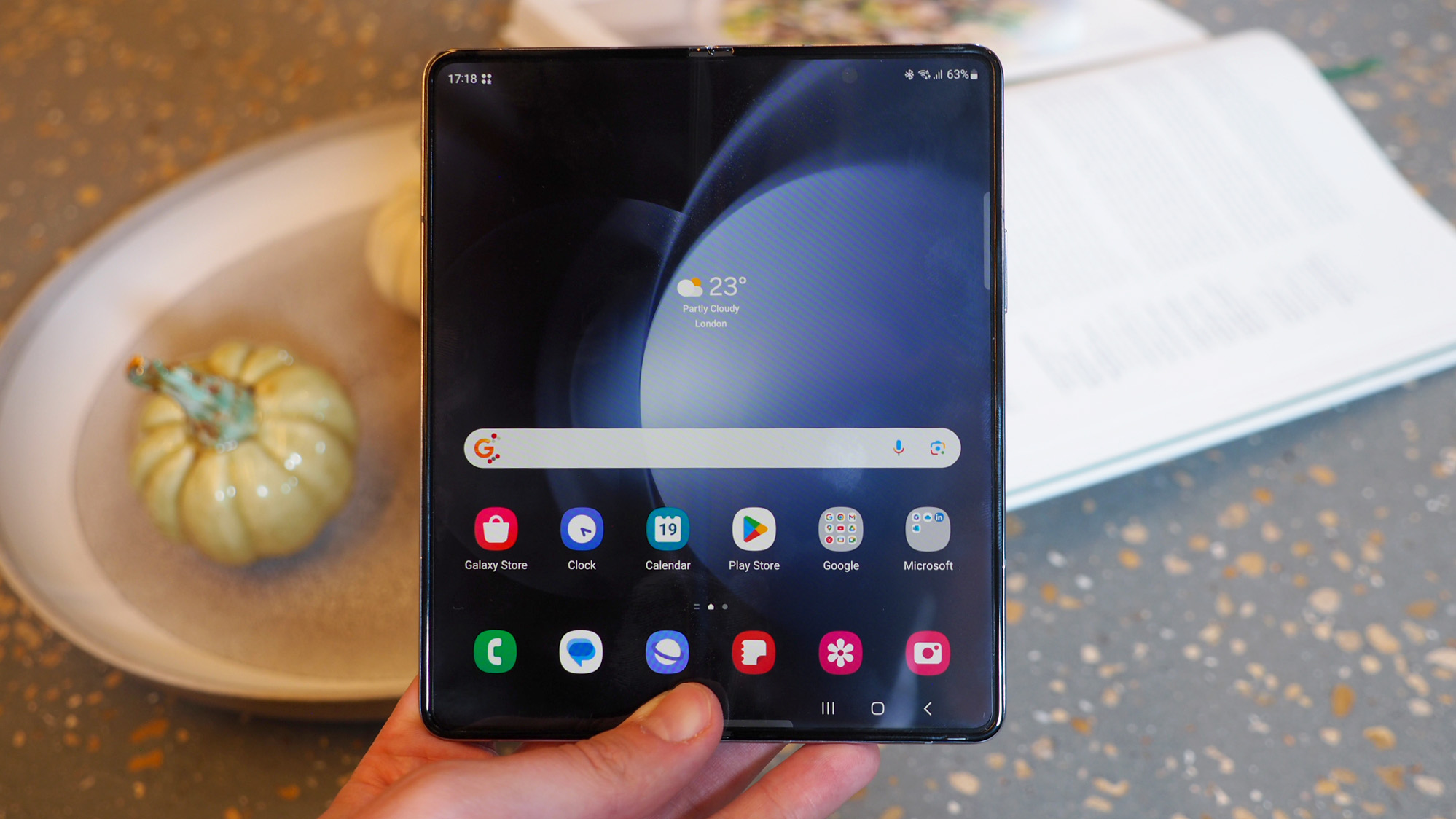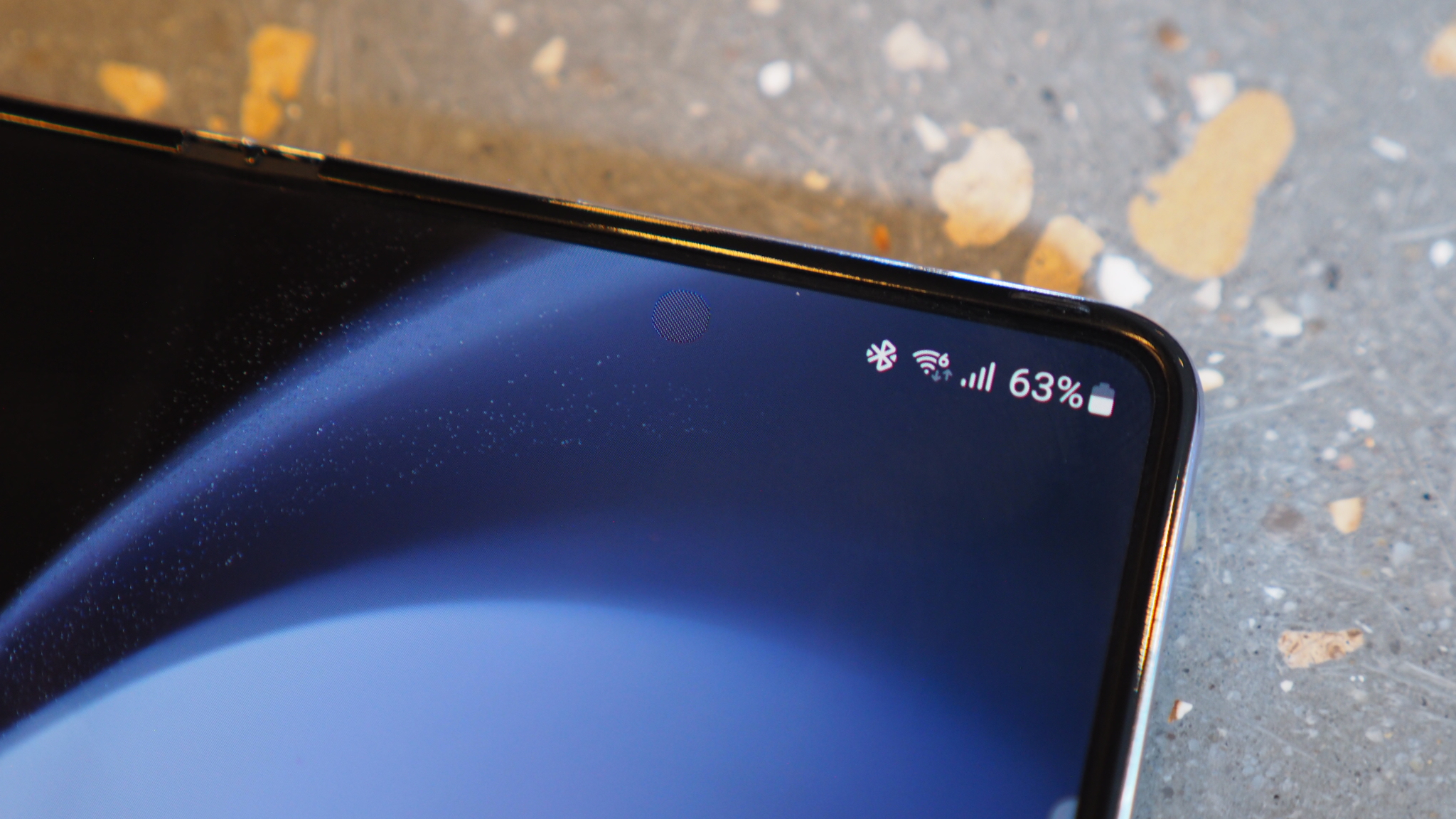I tried Samsung's Galaxy Z Fold 5 – now you can forget about the Google Pixel Fold
Samsung's 2023 foldable flagship, the Galaxy Z Flip 5, feels like the best-considered large folding phone that I've tried

Samsung Galaxy Unpacked's July edition is done and dusted and in the wake of a mass of product reveals – there are new Galaxy watches, Galaxy tablets and Galaxy foldables for 2023 – it's at the top-end of the range where I think Samsung has its most interesting product: the Galaxy Z Fold 5, which replaces and upgrades the earlier Z Fold 4.
I've handled the Z Fold 5 ahead of its reveal to get a taste of what this foldable is all about, but it's left me with a lingering initial sense: I prefer this Galaxy to the Google Pixel Fold. Which I wasn't necessarily expecting to be the case some weeks ago, but I've had issues with my Pixel Fold from day one, with poor app stability and, in the end after a fortnight of use, a totally dead internal screen (which wasn't the result of any impact or damage).
Now I'm not bashing the Pixel Fold unduly, after all the Google Pixel 7 Pro has been my favourite Android phone of the previous 12 months (and a 2023 T3 Awards-winner too) – but the foldable Pixel just hasn't gelled with me yet (I've got a new model to fire up and hope it'll convince me otherwise). It's big on the front, the screen bezels are large, and the internal screen isn't optimised for much either.
Samsung's competitor is different: the Z Fold 5 has a slimmer front screen and the software is more overtly aware that it's trying to be one of the best foldables, not just a 'normal' smartphone. You can even buy an S Pen stylus to go with it and use it for note-taking, sketching and such like. It's just a more complete and more complex device – in a good way, from my point of view.
Samsung Galaxy Z Fold 5: what's new?

Not that the Galaxy Z Fold 5 is hugely different from its Z Fold 4 predecessor, though, I must admit. Samsung's smaller clamshell device, the Galaxy Z Flip 5, is a much more significant generation-on-generation step forward for this year. In the larger Fold model, it's really more a case of refinement and smoothing out of minor factors to give the series a more up-to-the-minute focus.
So just what is different? Headline additions include IPX8 water- and dust-resistance (including the sold-separately S Pen), Gorilla Glass Victus 2 protection front, Armour Aluminium finish to the shell, and the so-called FlexHinge has been tested to 200,000 cycles to ensure longevity (although that's no improvement over the previous device).
The Z Fold 5 is 10g lighter than its predecessor (it's down from 263g to 253g), making it far lighter than the Pixel Fold's 283g weigh-in. However, while Samsung has shaved a fraction of a millimetre off the height and width, and dropped the folded thickness to 13.4mm (down from 15.8mm), Google's foldable is actually even slimmer, at just 12.1mm – but, to me, it doesn't feel it because of the front screen's aspect.
Get all the latest news, reviews, deals and buying guides on gorgeous tech, home and active products from the T3 experts
Galaxy Z Fold 5: Two screens are better than one

Not everyone will agree with form-factor preferences of course: the Z Fold 5's 6.2-inch exterior screen may read as bigger than the Pixel Fold's 5.8-inch one, but it depends on how you look at it really. The Google foldable has a much more traditional aspect ratio, which to me feels like using a wider 'normal' phone and, for me, largely mitigates the reason for opening the device. The taller screen of the Samsung almost gives incentive to open the device up for that much larger panel's visuals.
The Galaxy Z Fold 5's internal display may be the same 7.6-inch scale and resolution of its predecessor, but it's not the same screen: the 2023 model can go much brighter, at 1200 nits (up from 1000) with a 1750 nits peak brightness (up from 1300). That's significant and important for a foldable, as the screen coatings are always highly reflective, so having that additional brightness to compensate is key. The Pixel Fold, by the way, peaks at 1450 nits maximum.
Another upgrade is the Qualcomm Snapdragon 8 Gen 2 processor at the Z Fold 5's heart, which thanks to a Samsung partnership has been overclocked – a relationship that we expect to see continue for many years now, with Samsung's previous Exynos option no longer part of the formula. Snapdragon means no limits to pushing multiple apps, and with Samsung's FlexMode panel – i.e. the ability to divide and portion the screen for multiple app openings – I find Samsung's approach to a foldable just has greater practicality than others.
Samsung Galaxy Z Fold 5: Price & Competitors

I've seen plenty of others, too, from the Honor Magic Vs, to the not-Google-Play-capable Huawei Mate X3, and while there are certainly design perks to both of those in being slimmer still, for me it's the balance of proportion and software that makes the Samsung Z Fold the most appealing for me.
The Z Fold 5 is not perfect, mind, as I'd like the under-display camera to be improved at the very least, better still removed and replaced with a punch-hole visible one. And no S Pen integration (it's sold separately) also feels like a miss. I could also try and lambast the price but, you know what, Samsung's £1,749/$1,799 entry-level price for the 256GB model is still on par with the Pixel Fold's asking price. Foldables are just pricey.
Available from 11 August, the Samsung Galaxy Z Fold 5 will come available in Icy Blue (as you can see in my pictures), Cream or Phantom Black. Special edition colours –Blue and Grey – will also be available from Samsung direct. Pre-order deals will offer up to £650 off with handset trade-in (other territories' reductionsTBC), which could bring that sharp price down to a more sensible level that's worth considering.
Pre-order the Samsung Galaxy Z Fold 5 in the US
- Galaxy Z Fold 5 from $1799.99 on Samsung.com
- Galaxy Z Flip5 from $999.99 on Samsung.com
- Galaxy Tab S9 from $799.99 on Samsung.com
- Galaxy Watch6 from $299.99 on Samsung.com
Pre-order the Samsung Galaxy Z Fold 5 in the UK
- Galaxy Z Fold 5 from £1749 on Samsung.com
- Galaxy Z Flip5 from £1049 on Samsung.com
- Galaxy Tab S9 from £799.99 on Samsung.com
- Galaxy Watch6 from £289 on Samsung.com



Mike is T3's Tech Editor. He's been writing about consumer technology for 15 years and his beat covers phones – of which he's seen hundreds of handsets over the years – laptops, gaming, TV & audio, and more. There's little consumer tech he's not had a hand at trying, and with extensive commissioning and editing experience, he knows the industry inside out. As the former Reviews Editor at Pocket-lint for 10 years where he furthered his knowledge and expertise, whilst writing about literally thousands of products, he's also provided work for publications such as Wired, The Guardian, Metro, and more.
